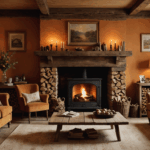Understanding common attic problems is a crucial step in ensuring your home remains energy-efficient, comfortable, and damage-free. Addressing these issues proactively can save homeowners significant time and resources in the long run. By recognizing the typical problems that occur in attic spaces, you can take informed actions to protect and maintain this vital part of your home.
One of the most frequent issues homeowners face is inadequate insulation. Poor insulation can lead to significant energy loss, making your HVAC system work harder to maintain desired indoor temperatures. This not only increases energy bills but also places unnecessary stress on your heating and cooling systems. To address this, modern insulation solutions tailored to diverse climates provide more effective barriers against heat transfer, maintaining a stable internal environment.
Another typical problem is insufficient ventilation. Proper ventilation is critical for regulating temperature and moisture levels in the attic. When ventilation is inadequate, it can result in excess heat during the summer months and create frost or moisture buildup in the winter. This can lead to structural damage and create an environment conducive to mold growth, which poses health risks. Implementing best practices in ventilation can involve installing ridge vents, soffit vents, or attic fans to sustain air circulation.
Moisture intrusion often stems from roof leaks or improper sealing. Over time, even small leaks can cause significant damage to attic flooring and the joists beneath, compromising the structural integrity of the entire home’s upper levels. Regular inspections and maintenance should be conducted to identify such vulnerabilities early, particularly following severe weather events that might exacerbate these issues.
Pests also pose a considerable threat to attics. Rodents, insects, and birds can exploit small gaps or weak points to enter the attic space. This not only causes potential damage to insulation and wiring but also presents sanitary concerns. Implementing pest prevention measures, such as sealing entry points and employing modern pest control solutions, can help circumvent infestations.
Here is a comparison of common attic problems and their impacts:
| Problem | Impact |
| Inadequate Insulation | Increased energy bills, inefficient HVAC performance |
| Insufficient Ventilation | Moisture buildup, mold growth, increased attic temperature |
| Moisture Intrusion | Structural damage, potential for mold or mildew |
| Pest Infestation | Damage to insulation and wiring, sanitary issues |
Regular inspections and maintenance, informed by these common problems and solutions, can help homeowners protect their attics and extend the longevity and performance of their home’s upper spaces.
Effective insulation strategies
When it comes to ensuring an energy-efficient and comfortable home, effective insulation strategies for your attic play a vital role. Insulation acts as a barrier that reduces the exchange of heat between your living spaces and the outside environment, helping to maintain a consistent internal climate. Here’s how you can effectively insulate your attic:
- Assess Your Current Insulation Needs: Begin by conducting a thorough inspection of your attic’s current insulation. Look for areas that might be under-insulated, such as corners and edges, where heat transfer is most likely to occur. Older homes might have outdated or compressed insulation materials, which could no longer be effective.
- Choose the Right Type of Insulation: Selecting the appropriate insulation type is crucial. There are various options available, such as fiberglass batts, spray foam, and blown-in cellulose. Each type has its own set of benefits:
- Fiberglass Batts: These are affordable, easy to install, and ideal for standard joist spacing in attics.
- Spray Foam: Provides excellent air sealing and high R-values, suitable for complex spaces with irregular shapes or when you need maximum thermal performance.
- Blown-in Cellulose: This is great for filling gaps and covering existing inadequate insulation, offering superior coverage for hard-to-reach areas.
- Implement Proper Installation: Once you have chosen the type of insulation, ensure it is installed correctly. If using batts, make sure they are cut to size, with no gaps, and placed evenly between joists. For spray foam, it’s advisable to hire professionals to ensure even application in crevices and on attic flooring.
- Consider Adding Radiant Barriers: In hot climates, adding radiant barriers (highly reflective materials) can further reduce cooling costs by deflecting heat absorbed through the roof. These are best installed facing an air space in the attic.
- Seal Air Leaks: Before installing or upgrading insulation, seal any air leaks in the attic. Common areas include around ceiling light fixtures, attic access hatches, and plumbing vents. Use caulk or weather-stripping to block these leaks and protect your home from unwanted drafts.
- Maintain Optimal Insulation Levels: Check the Department of Energy’s recommendations for R-values in your region. Attics should have insulation that meets or exceeds these recommendations to ensure year-round efficiency. Addressing this proactively protects your home against seasonal temperature fluctuations.
- Regular Inspections and Upkeep: Conduct regular inspections, especially after severe weather, to ensure insulation remains dry and intact. Damp or dislodged insulation can reduce its effectiveness and promote mold growth.
Implementing these modern insulation strategies will directly impact your home’s energy efficiency and comfort, offering a worthwhile investment for homeowners looking to protect and enhance their attic’s performance.
Ventilation best practices
Ensuring your attic is properly ventilated is crucial for maintaining a healthy and efficient home environment. An effectively ventilated attic can significantly reduce the risk of moisture buildup, which in turn prevents mold growth and structural damage. Proper ventilation allows excess heat and moisture to escape, especially during different weather extremes. This not only contributes to the longevity of your attic space but also enhances energy efficiency throughout your home, leading to reduced utility bills and more consistent indoor temperatures.
One of the key aspects of successful attic ventilation is the use of natural airflow methods, which includes a balance of intake and exhaust vents. Intake vents, typically installed under the eaves, allow cooler outside air to enter, while exhaust vents—commonly found at the roof’s ridge—permit hot, moist air to escape the attic space. This natural airflow cycle helps maintain optimal temperature and moisture levels, protecting your attic from the adverse effects of extreme temperatures and humidity.
Attic fans are another effective method to enhance ventilation. They work by actively circulating air, expelling hot air in the summer to reduce cooling costs and preventing moisture buildup during the winter months. While solar-powered fans can offer a sustainable option, electric models may deliver more robust airflow, making them ideal for larger attics. Homeowners should consider factors such as attic size and local climate when selecting the best fan type for their needs.
Ridge vents are a popular choice for exhaust due to their efficiency and discreet appearance. Installed along the peak of the roof, they create a continuous air exchange from the attic to the outdoors. Coupled with soffit vents for intake, ridge vents form a highly effective system that maintains consistent ventilation across the entire attic without the need for additional mechanical assistance.
In addition to ensuring proper ventilation, homeowners must regularly inspect and maintain their systems to function optimally. This entails checking vents for obstructions, such as debris and insect nests, which can hinder air circulation. Periodic maintenance of attic fans, including checking for proper operation and cleaning to remove dust buildup, is also necessary to uphold performance.
Adopting these best practices in ventilation allows homeowners to effectively protect their attics, extending the lifespan of their roofing materials and interior insulation while maintaining an energy-efficient environment. Incorporating a modern, well-planned ventilation strategy not only safeguards the structural integrity of your attic space but also provides peace of mind knowing your investment is well protected against common attic challenges.
Moisture and pest prevention
Preventing moisture accumulation and pest infestations in your attic is crucial for maintaining the integrity and longevity of your home’s upper spaces. Moisture can lead to significant structural issues, while pests can cause damage to insulation and wiring, creating costly repairs down the line. Here’s how you can protect your attic from these potential problems with modern and effective strategies:
Start by addressing any potential sources of moisture that might affect your attic. Roof leaks are a common culprit, so it’s essential to conduct regular inspections, especially after severe weather events, to identify and repair any vulnerabilities. Pay special attention to areas around chimneys, plumbing vents, and skylights, as these are notorious for leaks. Sealing these potential entry points with high-quality roof sealants is a proactive step in moisture prevention.
In addition to roof maintenance, ensure your attic has proper insulation and ventilation systems in place, as they work hand-in-hand to mitigate moisture issues. Efficient ventilation, as discussed earlier, helps in maintaining a balanced humidity level in the attic, reducing the risk of mildew and mold growth, which can compromise the structural integrity of your home.
Homeowners should also install vapor barriers as part of their moisture prevention strategy. These barriers prevent the diffusion of moisture through the walls and flooring, effectively reducing the likelihood of condensation within the attic. Applying these barriers to the inner side of the roof sheathing and around any ductwork or bathroom vents that pass through the attic can be particularly beneficial.
When it comes to pests, take steps to eliminate potential entry points. Thoroughly inspect your attic for any cracks or gaps around the eaves, soffits, and roofline. Sealing these gaps with caulk or expanding foam can prevent rodents and insects from finding their way inside. Additionally, ensure that attic vents are fitted with mesh screens to block birds and small animals while allowing air to circulate.
Consider using modern pest control solutions such as ultrasonic repellents, which use sound to deter pests without the need for traps or chemicals. Regularly checking for and removing any nests or signs of pest occupation is also vital in keeping unwanted visitors away.
Implementing these moisture and pest prevention measures will not only protect your attic but also conserve energy and enhance the overall safety and health of your home. By adhering to these homeowner tips and staying vigilant, you ensure that your attic remains a dry, pest-free environment, safeguarding your investment from these common, yet preventable issues.
Choosing the right materials
Selecting the right materials for your attic involves understanding the unique demands of this space and choosing products that offer durability, efficiency, and protection. Start by identifying the specific needs of your attic based on your local climate, attic structure, and intended use. High-quality materials not only shield your home from environmental stressors but also contribute to long-term energy efficiency and reduced maintenance costs.
For attic flooring, consider moisture-resistant materials that can withstand potential leaks or condensation. Plywood or oriented strand board (OSB) are commonly used, but for additional protection against moisture, treated plywood can provide enhanced resilience. If using the attic for storage or as a living space, ensure the flooring material can support your needs without compromising safety.
When it comes to insulating materials, opt for those that provide excellent thermal resistance and longevity. Spray foam insulation, for example, offers superior air sealing capabilities and high R-values, making it a popular choice for those looking for maximum efficiency and protection. However, if budget constraints are a concern, fiberglass batts or blown-in cellulose can offer cost-effective alternatives while still delivering significant energy savings.
For roofing materials, durability and thermal performance should be top priorities. Metal roofing, with its reflective properties, can help deflect heat during hot months, minimizing attic temperature rise. On the other hand, shingles with built-in solar reflective granules can also reduce heat absorption and extend the life of the roofing material.
Your attic’s protective materials should also include an effective and long-lasting vapor barrier. These barriers are crucial in preventing moisture damage by stopping water vapor from penetrating the attic walls and flooring. Made from polyethylene or foil-faced kraft paper, they ensure that your attic remains dry, thereby guarding against mold growth and structural deterioration.
Finally, when choosing paint finishes for any exposed wood or drywall in your attic, go with high-quality, mold-resistant paints. These paints inhibit mold growth on painted surfaces, adding an extra layer of protection to your attic’s structural components.
Investing in the right materials will not only enhance your attic’s functionality and protection but will also add value to your home by boosting energy efficiency and reducing the need for frequent repairs. By keeping these homeowner tips in mind, you ensure that your attic remains a modern space, prepared to handle the challenges of time and environment.
In conclusion, safeguarding your attic space through careful attention to common problems, strategic insulation and ventilation measures, diligent moisture and pest prevention, and the selection of quality materials, ensures an extended lifespan for this critical area of your home. By implementing these practical homeowner tips, your attic will remain a well-protected, energy-efficient, and problem-free space, contributing both comfort and value to your residence.


